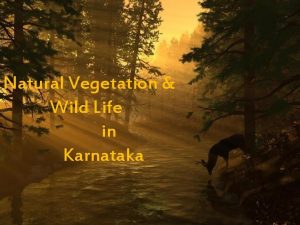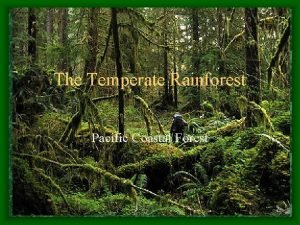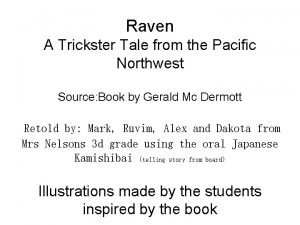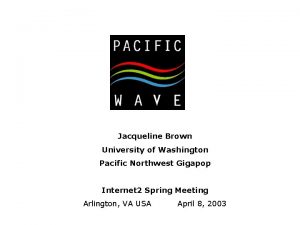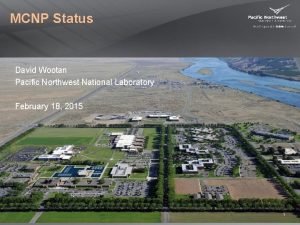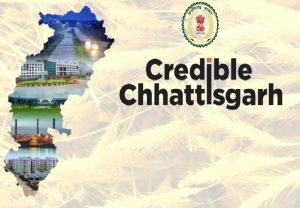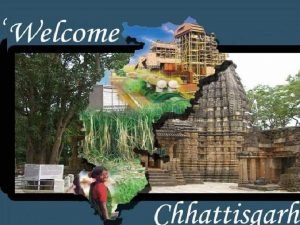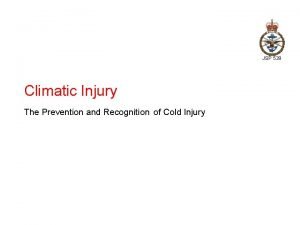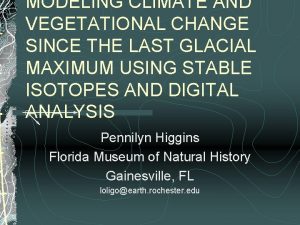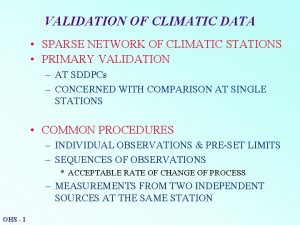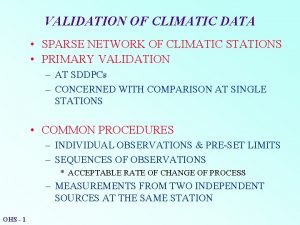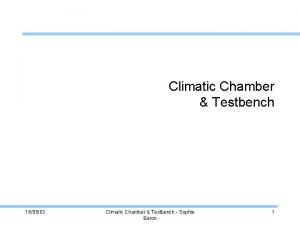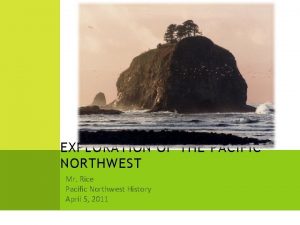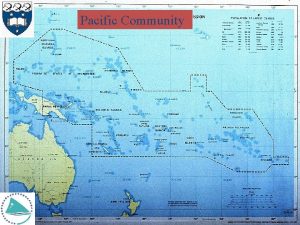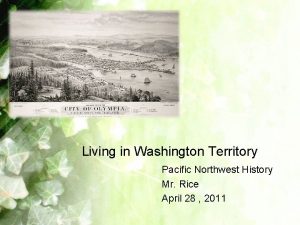Vegetational and Climatic History of the Pacific Northwest














- Slides: 14

Vegetational and Climatic History of the Pacific Northwest Russell Cannady

Method of Interest Palynology The study of pollen grains as an aid to the reconstruction of past plant environments. Relates to glaciers because the vegetational history of an area gives scientists a good idea of that areas climate

Whitlock What is known? - Over the last 20, 000 years world has gone from glaciation to interglaciation. • Why is the vegetational history significant? - Today’s biodiversity is the legacy of the past • Purpose of the paper - Reconstruct the vegetational and climatic history of the Pacific Northwest during the late-Quaternary period from 20 ka to the present day

How is data obtained? Sediment coring Lakes/ wetlands are the best areas “The spatial scale of the reconstruction is determined by the size of the lake or wetland, which in turn defines the pollen-collecting area within the surrounding vegetation. Small- to medium-sized lakes (1— 50 ha) collect pollen from an area of 100— 1, 000 km 2 (Jacobson and Bradshaw 1981). The temporal resolutions of the reconstruction are determined by the number and stratigraphic spacing of pollen samples collected from the sediment cores (Grimm 1988). Pollen samples are usually taken at a stratigraphic interval that represents one sample for every 300— 1, 000 years of sediment accumulation. ”

Let’s get into the results… From 20 -16 ka - Colder than present day, ~5 -7 C, and drier (about 1 m less precipitation/yr; known form presence of xerophytic taxa which indicate winter storms were less frequent and couldn’t penetrate land) - West Olympics had tundra/parkland vegetation (Spruce/alder/pine/mountain and western hemlock/grass at high elevation) - Puget Trough had tundra/subalpine parkland vegetation (grass/tundra herbs/spruce) *Presence of spruce significant because only found in mountains in eastern cascades today *Closest modern day analog is northern Rocky Mountains

Rocky’s

Other inferrences Lower treeline was at higher elevation Upper treeline lower Both indicate colder climate *information inferred from relative abundance of pollen grains


16 -14 ka Getting warmer…but still 2 -6 C below present, but precipitation more like today (Laurentide diminishing) Known from temperate communities to the south Mesophytic (wet loving) taxa in Puget Trough beginning to appear Much like subalpine western Cascades of today

14 -10 ka

14 -10 ka Olympic Peninsula - northeastern part dominated by herbs and shrubs - Drier conditions and coarse soil (glacial outwash) responsible for open vegetation - Indicative of deglaciation and warming Puget Trough Southern Puget Trough did not show signs of warming until 11. 5 ka By 10 ka, continued warming allowed temperate conifers to expand around Battle Ground Lake, and montane species left the region as their range was restricted to higher elevations.

The Big Picture

Wrapping Up Advance of Cordilleran ice sheet, and climatic factors from Laurentide ice sheet greatly effected the vegetation in Washington Vegetation responds quickly to climatic change (estimated around a 500 yr or maybe less response time) Climate is the ultimate dictator of vegetation and the last glaciation is a great example of that

Sources of Error Core at the deepest spot Fire frequency/poor fire record Good conditions to preserve pollen Animal dispersion can interfere with data
 Natural vegetation of karnataka
Natural vegetation of karnataka Pacific northwest temperate rainforest
Pacific northwest temperate rainforest Pacific northwest serial killers
Pacific northwest serial killers Pacific northwest raven
Pacific northwest raven Pacific northwest gigapop
Pacific northwest gigapop Pacific northwest food
Pacific northwest food Sers cte dual credit
Sers cte dual credit Pacific northwest national laboratory
Pacific northwest national laboratory Pacific northwest smart grid demonstration project
Pacific northwest smart grid demonstration project Pacific northwest research station
Pacific northwest research station Agroclimatic zones of chhattisgarh
Agroclimatic zones of chhattisgarh Climactic structure in theatre
Climactic structure in theatre What are the agro climatic zones of chhattisgarh
What are the agro climatic zones of chhattisgarh Climatic injuries
Climatic injuries Climatic injuries
Climatic injuries
